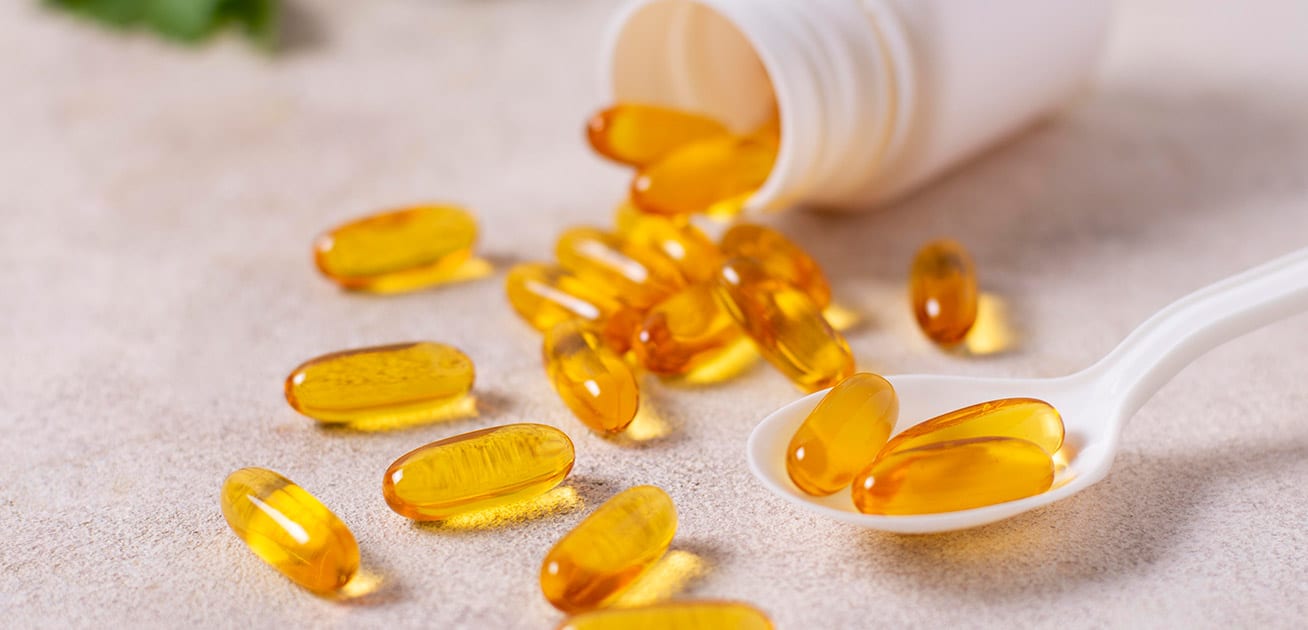VITAMIN D & HEALTH
What is the difference between Vitamin D2 and D3?
Vitamin D2 and Vitamin D3 are the two main forms of Vitamin D that we get from our food and from the sun. Both forms play an important role in helping our bodies absorb calcium, maintaining bone and teeth health, regulating our immune system, and even assisting in the movement of our muscles.1
Calciferol and Ergocalciferol
The scientific names for Vitamin D3 and D2 are calciferol and ergocalciferol respectively. There are many similarities and differences between these forms of Vitamin D, with ergocalciferol being the more commonly prescribed and used form.2 Let us take a closer look at the functions, benefits, and sources that provide these different forms of Vitamin D.
Similarities of Vitamin D2 and D3
Function
Both Vitamin D2 and D3 assist our bodies to absorb calcium more effectively in the small intestine. This in turn helps our body maintain bone and teeth health.3
Metabolism
When we consume supplements or when we’re out in the sun, the Vitamin D that our bodies get is then metabolized in the kidney. This means that our kidney converts the Vitamin D into its active forms, calciferol and ergocalciferol, which can then be used in our bodies.2
Differences between Vitamin D2 and D3
The main difference between Vitamin D2 and D3 is where they’re derived from. Vitamin D2 is found mainly in plants as well as fortified foods. On the other hand, Vitamin D3 is mainly found in meat.
Here are some examples of Vitamin D2 and D3 sources:4
Vitamin D2
- Vitamin D-fortified orange juice
- Vitamin D-fortified milk
- Vitamin D-fortified cereal
- Mushrooms
Vitamin D3
- Tuna
- Salmon
- Cod
- Cod liver oil
- Beef liver
Another huge source of Vitamin D is sunlight. When our skin is exposed to sunlight, our body will naturally produce Vitamin D. Being in sunny Singapore is an added advantage! However, there are various factors that affect how much Vitamin D our body produces from sunlight. Some of these factors include the colour of our skin, air pollution, lifestyle, existing medical conditions, and the amount of daylight we get.
Aside from its sources, another difference is the efficacy of Vitamin D3 compared to D2. It is proven that Vitamin D3 is more effective in absorbing and maintaining Vitamin D in the bloodstream. However, despite having higher efficacy, most supplements prescribed by doctors are usually Vitamin D2.2
The reason why most supplements prescribed are Vitamin D2 is due to it being more readily available in high dosages that are required by individuals with Vitamin D deficiency. However, there are now options of high-dose Vitamin D3 that are available, such as D-Cure which is a 25,000IU ampoule of Vitamin D3 (cholecalciferol).
How much Vitamin D do I need daily?
For adults, the average recommended daily dosage is around 600 international units (IU) and for older individuals (aged above 70), a daily dosage of 800 IU is recommended. Find out more about the daily Vitamin D dosage here.
How do I know if I require Vitamin D supplements?
- Fatigue
- Muscle weakness
- Hair loss
- Bone aches
- Falling sick easily
- Depression
It is advisable to seek professional advice from a doctor if you’re consistently suffering from one or more of these symptoms. There is a Vitamin D deficiency test that can help determine if you require additional Vitamin D supplements. Consult our doctor at the partner clinics today!
References
1. Kubala, Jillian, and Annie Lennon. “Vitamin D2 vs. D3: Benefits, differences, and more.” Available at:
https://www.medicalnewstoday.com/articles/vitamin-d2-vs-d3#vitamin-d. Accessed 27 January 2023.
2. Sutherby, Rosanna. “Vitamin D2 vs. D3: What Is the Difference, and Which Is Better?” Available at:
https://www.wellrx.com/news/vitamin-d2-vs-d3-what-is-the-difference-and-which-is-better/. Accessed 27 January 2023.
3. Seth, Tanya. “Vitamin D and intestinal calcium absorption.”
https://pubmed.ncbi.nlm.nih.gov/21664413/. Accessed 27 January 2023.
4. The President and Fellows of Harvard College. “Vitamin D | The Nutrition Source | Harvard T.H. Chan School of Public Health.”
https://www.hsph.harvard.edu/nutritionsource/vitamin-d/. Accessed 27 January 2023.
5. University of Nebraska – Lincoln. “Nebraska – University Health Center – 9 vitamin D deficiency symptoms (and 10 high vitamin D foods).”
https://health.unl.edu/9-vitamin-d-deficiency-symptoms-and-10-high-vitamin-d-foods. Accessed 27 January 2023.
RELATED ARTICLES









